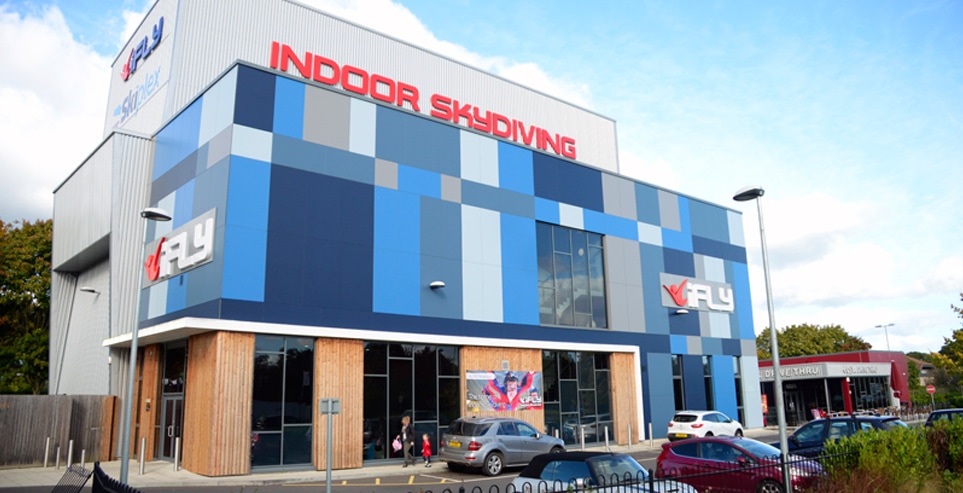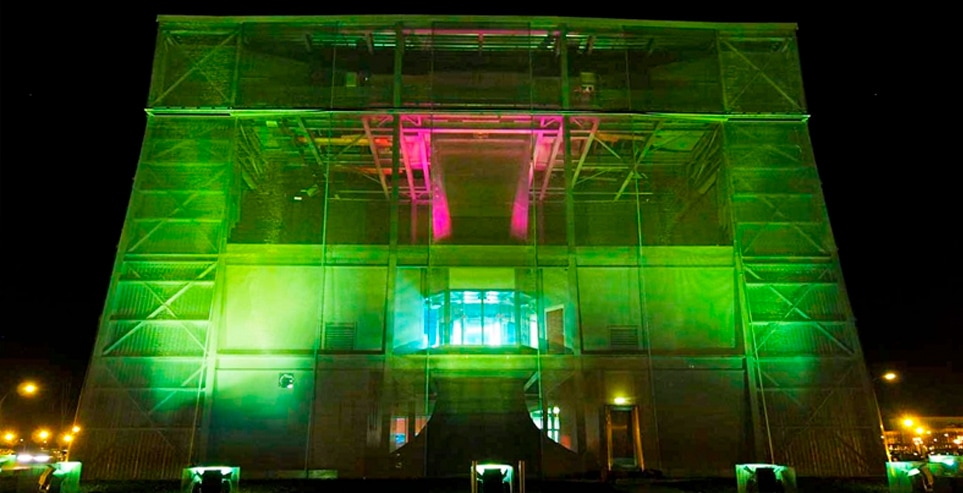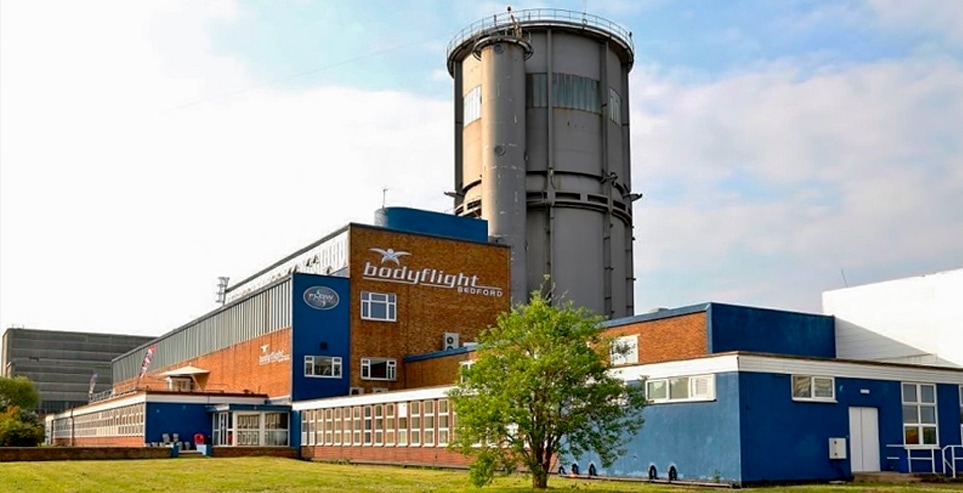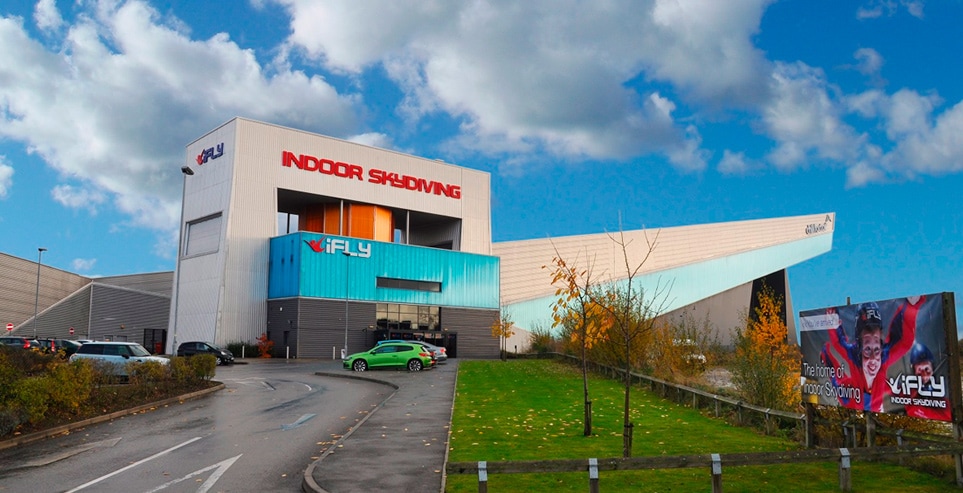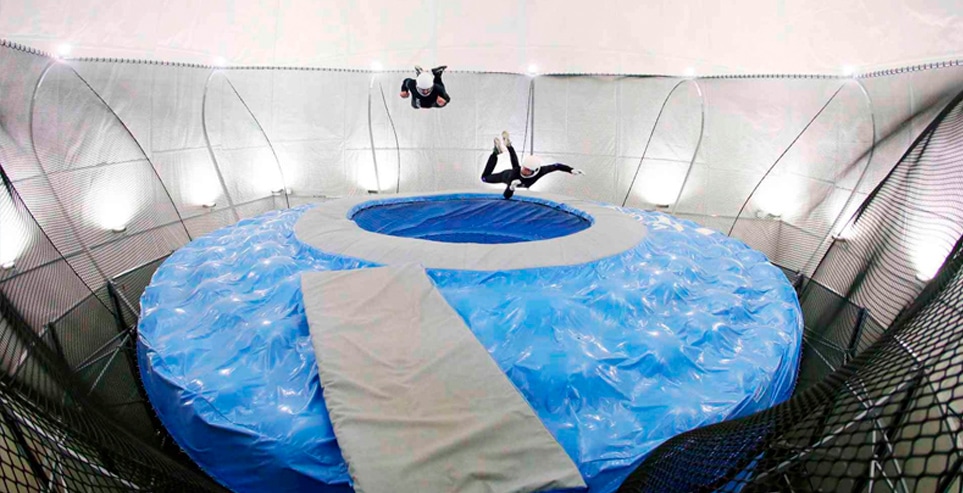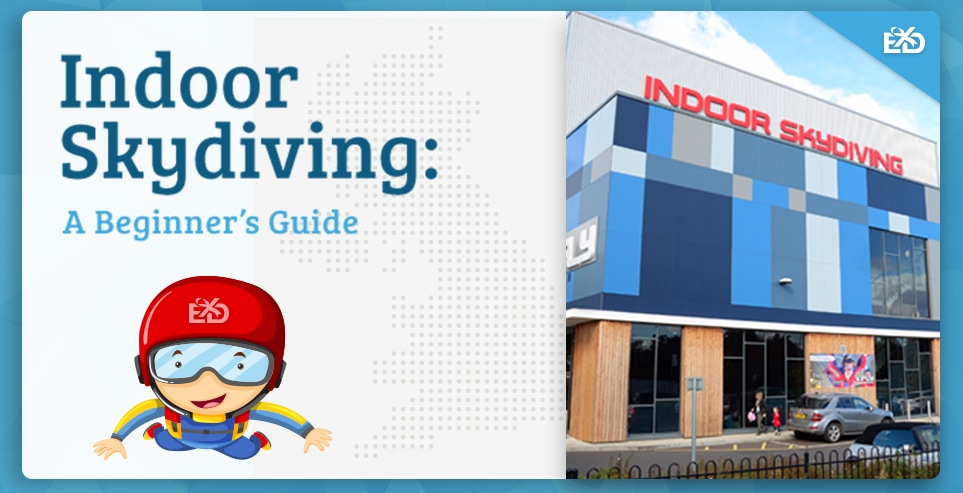
Indoor Skydiving: A Beginner’s Guide
- JUL 16, 2018
- Category : GUIDES
- WRITTEN BY: Shaun Yates
Hello, and welcome to the Experience Days guide to indoor skydiving. In this article, we’ll tell you everything you need to know about the recreational activity that’s swept the world in recent years. If you’ve ever wanted to experience the thrill of skydiving, but don’t fancy leaping from an aeroplane (who could blame you?) – indoor wind tunnel skydiving is the perfect alternative! Stick with us, and we’ll explain why below – plus the what, where and how of bodyflight across the UK.
Ready to fly already? You can purchase indoor skydiving vouchers, here.
Otherwise, let’s get started…
Table of Contents [ hide Show ]
What is indoor
skydiving?
Is indoor skydiving
safe?
Is indoor skydiving
hard?
Indoor
skydiving packages and prices
Where
can I find indoor skydiving near me?
iFLY Indoor Skydiving Basingstoke
iFLY Indoor Skydiving Milton Keynes
Twinwoods Adventure Indoor Skydiving Bedford
iFLY Indoor Skydiving Manchester
Vertigo Indoor Skydiving Belfast
What will my indoor skydiving
experience be
like?
Indoor Skydiving Gear
More Indoor Skydiving
What is indoor skydiving?
Basically, indoor skydiving is flying over a big fan inside a big tube.
Indoor skydiving, or bodyflight, is an activity that takes place inside a vertical wind tunnel (VWT). Participants enter the tunnel, where they’re lifted off the floor and supported, weightless, by a rising column of air. Inside, they’re subject to similar forces to those experienced by a skydiver in freefall.
With practice, indoor ‘divers’ can learn to fly their body in the airflow, performing a variety of aerial manoeuvres and tricks.

Vertical Wind Tunnels:
A Brief Summary
The first VWT was built by NASA in 1940 to test aircraft spins, helicopter blades, and parachutes. Twenty-four years later, Jack Tiffany became the first person to fly in one at the Wright-Patterson Airforce Base, Ohio.
A vertical wind tunnel under construction in 1930 | Image Credit: www.upload.wikimedia.org
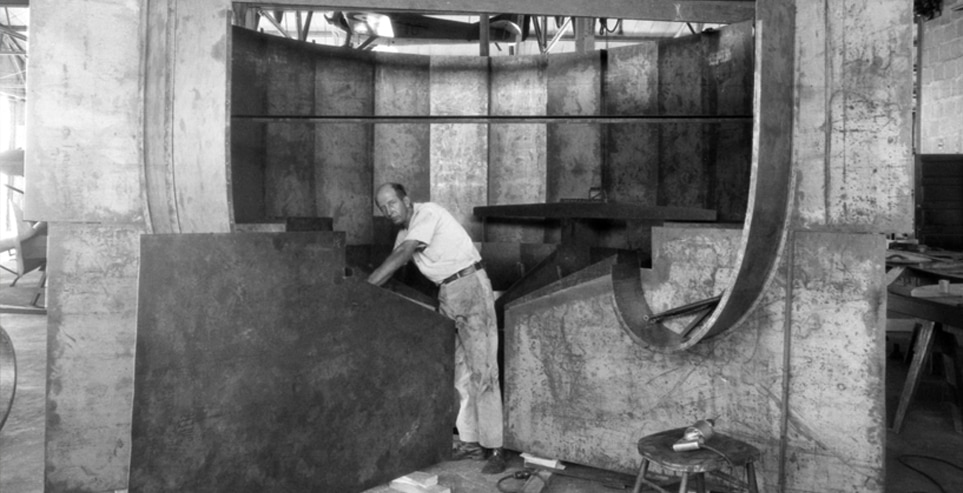
Since then, vertical wind tunnels have been built all over the world, specifically designed for human flight. There are several different types – including propeller below or above, open flow, and recirculating designs.
In the UK, most recreational tunnels are of the recirculating type – the latest and generally preferred design. These work by blasting air in a loop. The flight chamber is located within a vertical section of this loop – air passes through and is recirculated back to the bottom.

How a two-sided recirculating system works | Image Credit: www.bodyflight.net
Simple really!
Is indoor skydiving safe?
Yes – so safe that three-year-olds can (and do) take part!
Compared to jumping from a plane at 13,000 feet, indoor skydiving is a risk-free activity. Typically, first-time flyers are accompanied inside the tunnel by a certified safety instructor. They stay within arm’s reach throughout the experience, while you learn to control your body in flight. They’ll also keep you from hitting the sides – though your helmet and jumpsuit should provide ample protection against bumps.
Indoor Skydiving | Image Credit: www.downunder.iflyworld.com
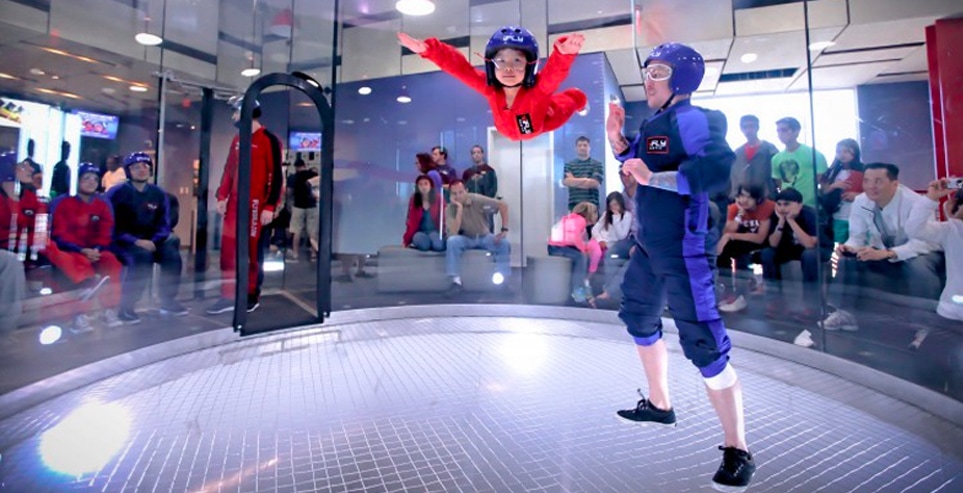
Bodyflight is relatively low impact, so other injuries are very rare. However, there are still some people who should give it a miss. Pregnant women and those who’ve previously dislocated a shoulder are advised against indoor skydiving. Likewise, those under the influence of alcohol or non-prescribed drugs!

Is it hard to breathe in there?
There’s plenty of wind blowing in your face, which can cause some first-timers to unconsciously hold their breath. Flying shouldn’t impair breathing, however, so just remember and relax.

Wait, is there any danger I’ll be sucked up into the fan?
In short, no.
Firstly, each facility has manual control of the wind speed, ensuring they hit the right balance for every flyer’s weight. Secondly, your safety instructor simply wouldn’t allow it. Thirdly, even if they did, you wouldn’t be sucked into the fan without hitting some kind of obstruction first. Finally, modern flight chambers are built with a diffuser which reduces the likelihood of even hitting that obstruction.
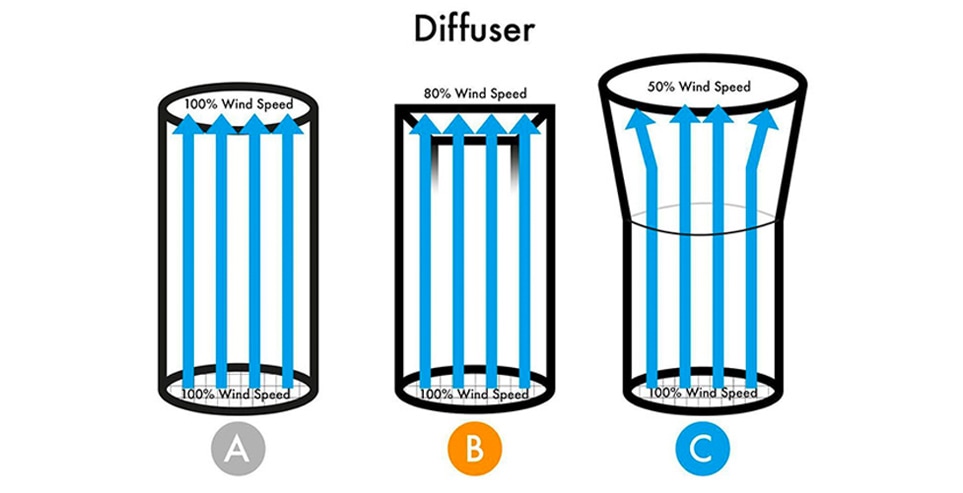

How high will I fly then?
During a basic first-time flight, you’ll hover between 0.5-7 feet off the floor. Generally, this is the safe range within which your instructor can tutor you.
Most venues offer ‘high flights’ as part of their beginners package, or as an optional extra. Here, your instructor will use their own skills to guide you higher up the flight chamber – say around 10-20 feet.

And if I fall and hit the floor?
Once again, the controlled conditions of the tunnel make this very unlikely. Besides, the floor of the flight chamber is usually an elastic net which provides a soft landing in the event of a fall.
All in all, if you’re reasonably fit and healthy, and you pay attention to your instructor, indoor skydiving is no more dangerous than any other supervised indoor activity – so don’t let safety concerns put you off!
Is indoor skydiving hard?
The basics are simple, but the fancy stuff can take years to master!
Even those with no prior experience can enter a wind tunnel and enjoy the sensation of bodyflight. Often, it’s as simple as leaning forward into the wind...
From here, your instructor will help you to gain a stable position – arching your body with hips pushed forward. You could reasonably expect to achieve this within the first session – though, of course, everyone gains confidence at their own pace.
Next up, there’s basic turns, forwards and backwards movements, rises and falls, which are accomplished by subtle movements of the arms and legs. Naturally, these all take a little more practice, but they’re still within easy reach of the enthusiastic amateur.
Finally, for true diehards, there are even more advanced manoeuvres and team formations which all require a high degree of skill and hours of tunnel-time. Check out a professional performance below…
Needless to say, indoor skydiving at this level is pretty darn hard!
Indoor Skydiving Packages & Prices
Wind tunnels offer a variety of packages and prices for first-time flyers, groups & parties, regular flyers and experienced skydivers.
Obviously, each venue’s slightly different, but you’ll still find common similarities:
 Typically, more expensive packages
include
more flight time
Typically, more expensive packages
include
more flight time
 Evenings, weekends and school
holidays are
peak times and, therefore, more expensive
Evenings, weekends and school
holidays are
peak times and, therefore, more expensive
 You’ll get a better deal during off
peak
times
You’ll get a better deal during off
peak
times
 Group discounts are available
Group discounts are available Returning visitors and experienced
divers
receive better rates
Returning visitors and experienced
divers
receive better rates
In the UK, prices vary from £30-60 for a beginners two-flight package, equivalent to a freefall of around 36,000 feet – or a couple of minutes. This increases to around £70-90 for twice the flight time.
If you’re a more experienced flyer, we’d recommend contacting your nearest wind tunnel to check indoor skydiving packages and prices (see details below).
Meanwhile, first-time flyers can check out two great options, here.
Where can I find indoor skydiving near me?
In the UK, there are currently five vertical wind tunnels open to the public – in Basingstoke, Milton Keynes, Bedford, Manchester and Belfast.
iFLY Indoor Skydiving are undoubtedly the biggest player in the UK’s bodyflight scene. They operate three of the country’s recreational facilities, and the Basingstoke location is their latest. It features a modern recirculating wind tunnel with a diameter of 14ft. The system delivers a super-smooth, super-fast and super-cool airflow, and all instructors are trained to the highest standard.
After your flight, you can also enjoy several other onsite activities – including a rotating Freedom Climber climbing wall!
-

Price
From £29.99 for 2 flights (term time weekdays, before 11am or 4pm–6pm) -

Minimum Age
3 -

Maximum weight
18 stone -

Wheelchair Accessible?
Yes
iFLY Milton Keynes (formerly Airkix) was the first vertical wind tunnel to open in Britain. Situated within the Xscape entertainment complex, its recirculating design generates windspeeds of up to 165mph through the 12ft flight chamber. The facility is newly refurbished, and all staff are trained to iFLY’s tip-top standard.
Nearby, you’ll find loads of shopping, dining and entertainment options to explore post-flight.
-

Price
From £29.99 for 2 flights (term time weekdays, before 11am or 4pm–6pm) -

Minimum Age
3 -

Maximum weight
18 stone -

Wheelchair Accessible?
Yes
Bodyflight Bedford is the UK’s largest recirculating wind tunnel – with an impressive 16.4ft diameter. Originally built to test plane aerodynamics, it was repurposed and converted in 2005. Today, first-timers and pro flyers come to experience windspeeds of up to 180mph!
When they’re done, the Twinwoods Adventure site also offers a host of other activities – including indoor surfing, racing simulators and pampering treatments.
-

Price
From £39.99 for 2 flights (Off Peak) -

Minimum Age
5 -

Maximum weight
No strict limit, but those over 19.5 stone may find it difficult -

Wheelchair Accessible?
Yes
Back to iFLY now and their Trip Advisor-recommended Manchester venue. Here, you’ll find a powerful 14ft tunnel overseen by friendly staff, plus an onsite café/bistro. Visitors benefit from the brand’s customary professionalism and inclusivity – flyers of all abilities are welcome.
Part of the Trafford Quays Leisure Village, the facility is surrounded by plenty more places to eat, drink, shop and have fun!
-

Price
From £29.99 for 2 flights (term time weekdays, before 11am or 4pm–6pm) -

Minimum Age
3 -

Maximum weight
18 stone -

Wheelchair Accessible?
Yes
Belfast’s Vertigo Indoor Skydiving Centre has an open flow system rather than a recirculating one. Unlike the others on this list, its wind tunnel is open-sided, which provides fist-time flyers with a fresh new challenge. There’s no danger of ‘falling off’ inside an enclosed flight chamber, but it’s a different story with this one! Happily, there’s plenty of padding and, of course, experienced instructors to help keep you in the airflow.
The centre is within minutes of other Titanic Quarter sites – including the Titanic Belfast museum and SSE Arena Belfast.
-

Price
From £45 (Off Peak) -

Minimum Age
4 -

Maximum weight
22 stone -

Wheelchair Accessible?
Yes
What will my indoor skydiving experience be like?
Whichever venue you visit – at home or abroad – your experience will usually go something like this…

Check-in
All venues will ask you to arrive in plenty of time ahead of your flight (20-60 mins). This allows time for you to check-in and complete your paperwork (usually a Statement of Risk for all flyers and a parent/guardian’s signature for under-18s).

Briefing
You’ll meet your certified flight instructor for a safety briefing and training session. They’ll explain what to expect inside the tunnel, including the hand signals you’ll use to communicate.

Gear Up
Next, you’ll be fitted with a flight suit, helmet and goggles (some venues also issue ear plugs). We’ll take a closer look at this kit in the next section.

Flying
Your instructor will lead the group to the wind tunnel, where each of you will have a chance to fly, while the rest watch. Your instructor will always be with you inside the flight chamber. Group size/flight time will depend on the package you purchase.

Post Flight
Once everyone’s flown, you’ll debrief and de-gear. Many venues will then present you with a personalised flight certificate, before you’re given the opportunity to purchase photos and video of the experience.
Indoor Skydiving Gear
Here’s some more info about the kit you’ll need to begin indoor skydiving…
(Don’t worry – the venue will/can supply most of it!)
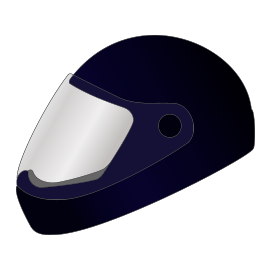
Helmet
We know – obvious, right? Your helmet protects your head from bumps against the flight chamber walls, while keeping long hair securely out of the wind. Beginners are fitted with a helmet during gear up, though more experienced flyers can buy their own. Various specialist helmets are available which have a full-face visor to shield them from prolonged wind exposure. First-time flyers, however, are more likely to receive a standard open face helmet, plus a pair of…

Goggles
Keeping your eyes open against a >160mph wind is no mean feat, so – without a full-face visor – goggles are an essential piece of indoor skydiving kit. Happily, all five venues we’ve listed provide them as standard.

Flight Suit
Your flight suit provides a uniform surface for the airflow to act against, while offering protection against wind exposure, bumps and grazes. Student suits are usually made from a tough fabric, like Cordura, and venues will carry a range of sizes to ensure a good fit for all weights and body types. Heavier flyers wear a baggier suit to increase drag (more buoyancy), whereas lighter flyers wear a tighter suit to decrease it (less buoyancy). This helps to keep everyone floating within a safe range.

Ear Plugs
Vertical wind tunnels are pretty noisy places, so all should offer earplugs. You’ll use hand signals to communicate inside the flight chamber – so there’s no reason not to look after your hearing!
What should I wear to an indoor skydiving experience?
Helmet, goggles, flight suit and earplugs will all be supplied by the indoor skydiving centre. However, if you’re about to attend your first experience, here’s a few tips on what wear:
 A single layer of comfortable
clothing is
best
A single layer of comfortable
clothing is
best
 Flight suits can chafe, so consider
a
long-sleeved rash guard or base layer
Flight suits can chafe, so consider
a
long-sleeved rash guard or base layer
 iFLY advise against collared shirts
iFLY advise against collared shirts
 If you’ve long har, bring a
hairbrush and
hair ties
If you’ve long har, bring a
hairbrush and
hair ties
 A sturdy-ish pair of lace-up
trainers is
ideal
A sturdy-ish pair of lace-up
trainers is
ideal
Bear all this in mind, and you’re guaranteed a comfortable bodyflight experience.
More Indoor Skydiving
If you enjoy your first experience, there are plenty of ways to pursue your new hobby further.
So, you’ve just had your first taste of indoor skydiving, and guess what – you loved it!
Awesome. But what’s next?
Well, of course, you’ll want to book another session in the tunnel – perhaps a longer one this time. Return visitors can generally book extended flights at cheaper rates, so you’ll have more opportunity to work on your positioning/technique.
As these improve, even more options are open to you – including private coaching, training camps, formation flying, plus team and individual contests. Competitive indoor skydiving comprises several disciplines, and the sport’s popularity has grown year by year.
Competitive indoor skydiving | Image Credit: www.indoorskydivingsource.com
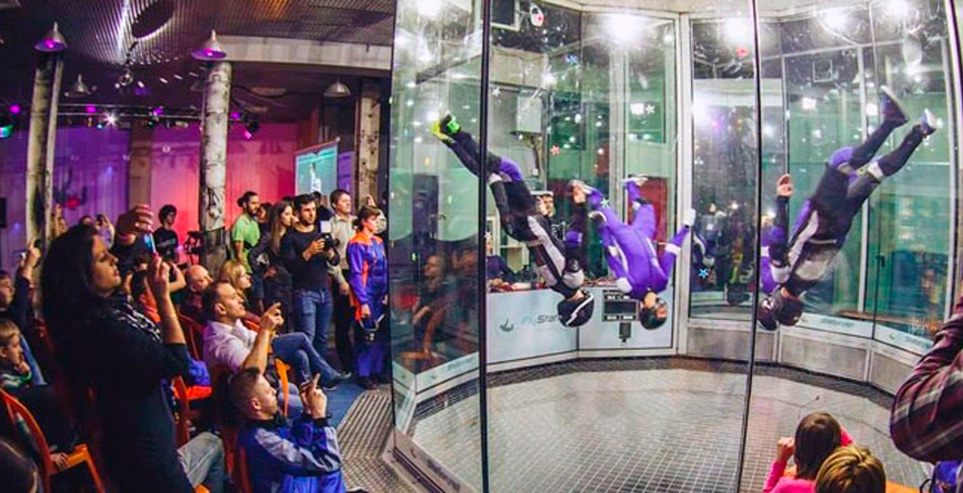
Finally, if you feel emboldened, you could even give the real thing a go!
That’s right – flying inside a vertical wind tunnel is one thing, but nothing beats a real skydive for sheer can’t-believe-I-did-that exhilaration. At least that’s what we think, and, at Experience Days, we’ve a huge range of tandem skydives across the UK.
Browse our skydiving section, here.
Phew! That brings us to the end of our beginner’s guide to indoor skydiving. We hope you’ve been inspired to give bodyflight a try at one of the UK’s epic wind tunnels – in Basingstoke, Milton Keynes, Bedford, Manchester or Belfast.
We think it’s a unique experience everyone should try – so why not treat someone to an indoor skydiving gift voucher, today?
Purchase yours, here, or – if you’ve questions or comments concerning anything we’ve said – please do get in touch below!



